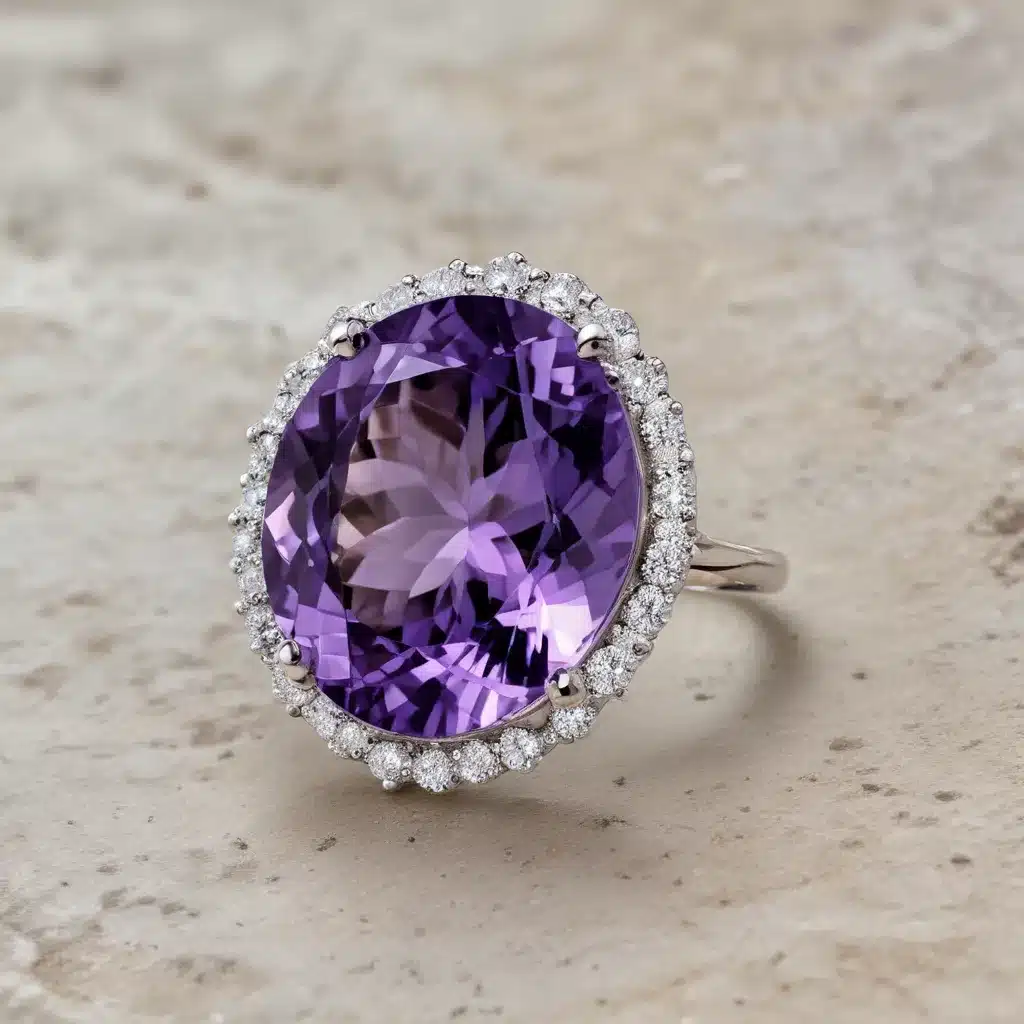
Amethyst, the alluring and versatile purple quartz, has long been a treasured gem in the world of jewelry and ornamental arts. Its captivating hues, ranging from delicate lavender to deep, rich purple, have enchanted admirers for centuries. However, the traditional mining of natural amethyst has raised concerns about its environmental impact and sustainability. Fortunately, the rise of synthetic amethyst offers a solution that combines the beauty of this classic gemstone with a more eco-friendly approach.
Amethyst: The Classic Gemstone
Amethyst is a variety of quartz that is valued for its stunning purple color, which can range from pale lilac to deep, almost black-purple. This color is caused by the presence of iron and trace elements within the quartz crystal structure. Natural amethyst is formed deep within the Earth’s crust, where hot, silica-rich fluids gradually fill cavities and cracks, allowing the crystals to grow over time.
Amethyst has been prized throughout history, with records of its use dating back to ancient civilizations in Greece, Rome, and Egypt. In the Middle Ages, amethyst was believed to have powerful healing and protective properties, making it a popular choice for religious and royal regalia. Even today, amethyst remains a beloved gemstone, with its February birthstone status and widespread use in jewelry and decorative items.
Synthetic Amethyst Production
To address the growing demand for amethyst while mitigating the environmental concerns associated with mining, the gem industry has developed sophisticated techniques for producing synthetic amethyst, also known as created amethyst. These laboratory-grown gems are chemically and structurally identical to their natural counterparts, but they are created through controlled, eco-friendly processes.
One of the primary methods for producing synthetic amethyst is hydrothermal synthesis, which involves growing the crystals in a highly pressurized, heated vessel filled with a nutrient-rich solution. This process mimics the natural conditions in which amethyst forms, but it is far more efficient and environmentally friendly than traditional mining operations.
Another method, known as the flux growth method, involves dissolving the necessary components in a molten flux, which is then slowly cooled to allow the amethyst crystals to form. This technique often results in larger, more uniform synthetic amethyst stones, making it a popular choice for high-quality jewelry applications.
Sustainability in the Gemstone Industry
The rise of synthetic amethyst and other lab-grown gems has brought about a significant shift in the gemstone industry’s approach to sustainability. Traditional mining of natural gemstones, including amethyst, can have a substantial environmental impact, as it often involves the destruction of fragile ecosystems, the use of heavy machinery, and the generation of waste products.
In contrast, the production of synthetic amethyst is a more controlled and eco-friendly process. It eliminates the need for resource-intensive mining, reduces the carbon footprint associated with transportation and processing, and minimizes the risk of unethical labor practices or human rights abuses that can sometimes be found in the natural gem trade.
Moreover, synthetic amethyst is generally more affordable than its natural counterpart, making it accessible to a wider range of consumers who are looking for sustainable and responsible gemstone options. This increased accessibility, combined with the growing awareness of environmental and ethical concerns in the jewelry industry, has contributed to the growing popularity of synthetic amethyst and other lab-grown gems.
Applications and Utilization
The versatility of amethyst, both natural and synthetic, has led to its widespread use in a variety of applications. In the jewelry and decorative arts sector, amethyst is a beloved choice for rings, necklaces, earrings, and other ornamental pieces. Its rich purple hue and high Mohs hardness of 7 make it a durable and visually striking gem.
Beyond the realm of jewelry, amethyst has also found its way into industrial and technological applications. Due to its piezoelectric properties, amethyst is used in the production of specialized electronic components, such as oscillators and transducers. Additionally, the thermal conductivity of amethyst has made it a valuable material in various heat-dissipation applications.
Amethyst’s cultural and spiritual significance also continues to endure. In many traditions, this gem is believed to have calming and protective properties, making it a popular choice for meditation and healing practices. The unique color and vitreous luster of amethyst have also inspired artists and artisans, who incorporate it into decorative objects, sculptures, and even architectural elements.
Conclusion
The advent of synthetic amethyst has presented a remarkable opportunity to preserve the beauty and allure of this classic gemstone while addressing the pressing concerns of sustainability and environmental impact. Through the application of advanced scientific techniques, the gemstone industry can now offer a more eco-friendly alternative to natural amethyst, without compromising the stone’s inherent qualities.
As consumers become increasingly conscious of the origins and production methods behind the products they purchase, the growing popularity of synthetic amethyst reflects a shift towards a more responsible and sustainable future for the gemstone industry. By embracing the advantages of lab-grown gems, we can enjoy the timeless charm of amethyst while contributing to a more environmentally conscious and ethical jewelry landscape.
At Shelby Gem Factory, we take great pride in our commitment to sustainability and innovation. Our selection of synthetic amethyst and other lab-grown gems allows our customers to indulge in the beauty of these treasured stones while supporting a more environmentally friendly approach to gemstone production. Discover the captivating world of synthetic amethyst and explore the endless possibilities it holds for the future of the jewelry industry.

